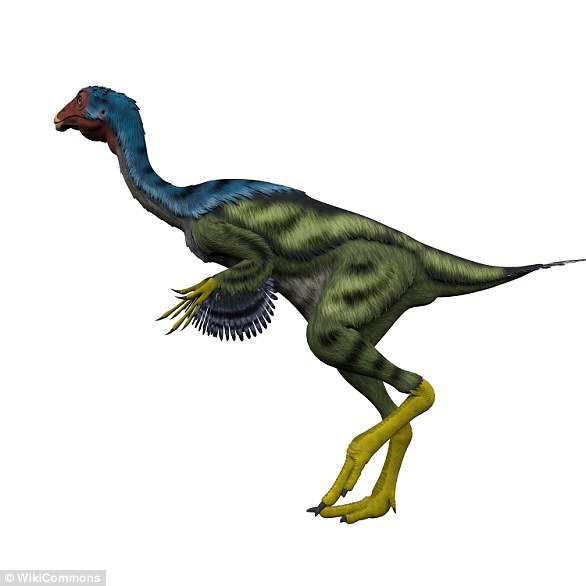A grad student who bought $5,000 worth of dinosaur bones from a private dealer for school can now lay claim to the rare distinction of discovering a new species.
Kyle Atkins-Weltman, now a PhD candidate in ‘paleo-ecology’ at Oklahoma State University, even got to name his find.
He’s called it the ‘Pharaoh’s dawn chicken from hell’ (Eoneophron infernalis in Latin).
But this ‘chicken from hell’ — a smaller cousin to the previously known and also very poultry-like dinosaur, Anzu wyliei, whose bones Atkins-Weltman thought he had purchased — actually has a much bigger story to tell than its own mere existence.
‘Our work,’ the PhD student argued, ‘demonstrates that dinosaur diversity may not have been declining before the asteroid hit.’
His new species, in other words, flies in the face of theories repeatedly posed by other paleontologists who contend dinosaurs were already a dying out, weakened by repeated ‘volcanic winters’ before the Chicxulub meteor landed its death blow.
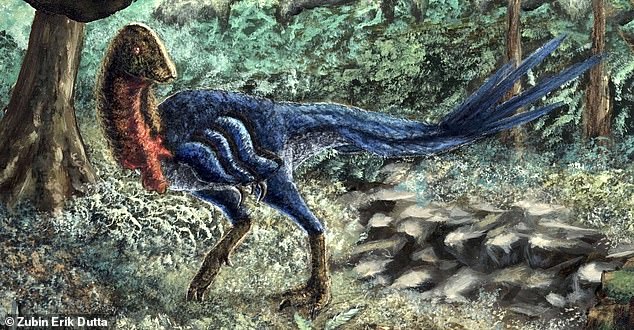
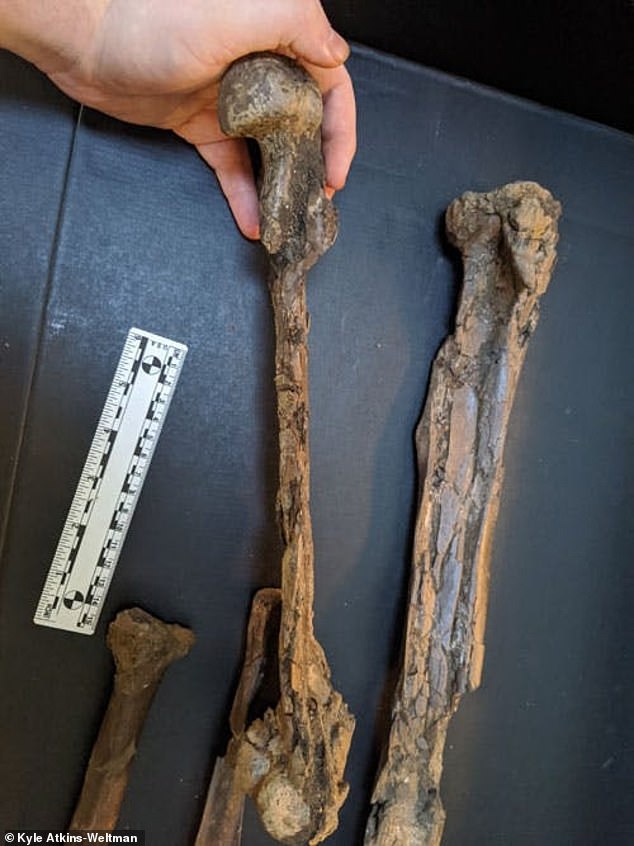
Working with an associate professor of anatomy at Oklahoma State, Dr Eric Snively, the young Atkins-Weltman now believes that even more undiscovered dinosaurs from those final years of the Cretaceous might be right under researchers’ noses.
‘More species from this time period [may] yet to be discovered,’ the pair wrote for The Conversation, ‘potentially even through reclassification of fossils already in museum collections.’
Their reasoning is based on methods used to confirm that Eoneophron infernalis is really a new species: paleohistology, the study of microstructures within fossil bone.
Paleohistology techniques underwent a revolution in the second half of the 20 century, suggesting that roughly a century’s worth of early dinosaur discoveries may yet still benefit from a more modern and granular second look.
In the case of the new ‘Pharaoh’s dawn chicken from hell,’ the truth came from taking thin slices of its bones and determining its age like the rings of a tree.
Originally, Atkins-Weltman had purchased the fossils while in a masters program at the University of Kansas — hoping to study the weight-bearing, or ‘metatarsal,’ toe bones of the Anzu ‘hell chicken’ dinosaur.
The PhD candidate thought he had ordered femur, tibia and metatarsal bones of the Anzu wyliei, a larger example of the same Oviraptorosaur (‘egg thief lizard’) group of dinosaurs as the new species.
But something was off about the bones.
‘They were about 25 percent smaller than other Anzu fossils,’ Atkins-Weltman recalled.
‘We figured it was a juvenile Anzu,’ he told Oklahoma State’s alumni magazine.
‘I assumed it was an Anzu, until the evidence showed it wasn’t.’
Help from Oklahoma State associate professor of anatomy Dr Holly Woodward-Ballard revealed that the spacing between the outer rings of this specimen’s bone slices were too closely packed together to be the bones of a juvenile Anzu.
The ringed layers within a young animal’s bones, as Woodward-Ballard explained to the Washington Post, are often spaced far apart — a sign of youthful growth spurts.
The rings inside Atkins-Weltman’s fossil purchase, however, were so close together that Dr Woodward believed they suggested a dinosaur nearly at its peak maturity.
Or, as she put it to local KWTV News 9: ‘I’d say this critter is approaching adult size.’
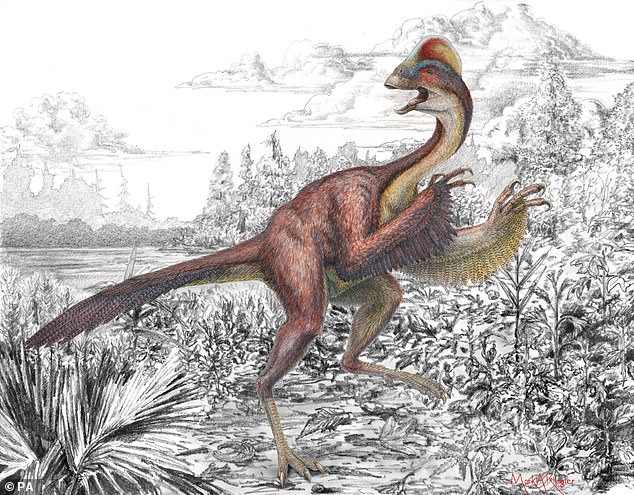
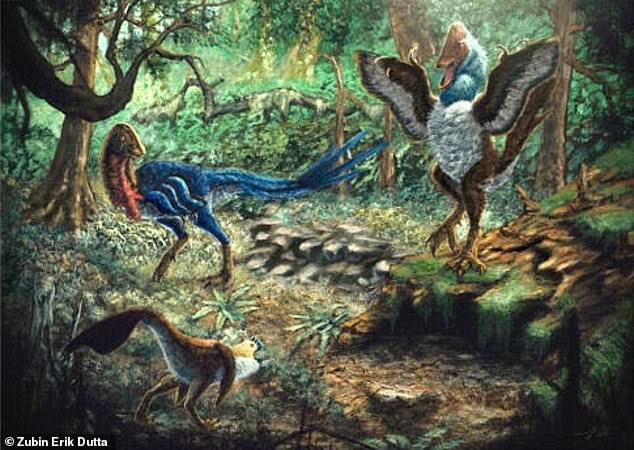
Atkins-Weltman, Dr Snively, Dr Woodward-Ballard and their colleagues published news of the new dinosaur in the journal PLOS One this January.
The bones had been excavated from the so-called Hell Creek Formation, an area spanning Montana, North Dakota, South Dakota and Wyoming, where many dinosaur fossils — including the 10-foot-tall Anzu wyliei ‘hell chicken’— had been discovered.
Atkins-Weltman’s new cousin to that ‘hell chicken,’ Eoneophron infernalis, measures up at less than a third of that size: about 3 feet tall at the hip, and roughly the weight of a human being, between 150 and 160 pounds.
The 28-year-old PhD student chose the name ‘Pharaoh’s dawn chicken from hell,’ in honor of both the Anzu and his own deceased pet Pharaoh, a Nile monitor lizard.
‘It was a very birdlike dinosaur. It had a toothless beak and relatively short tail. It’s hard to tell its diet because of the toothless beak,’ according to Atkins-Weltman.
‘It definitely had feathers,’ he added. ‘It was covered in feathers and had wings.’
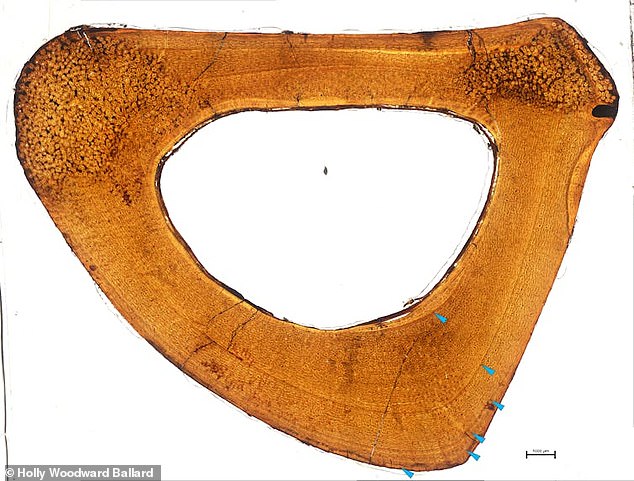
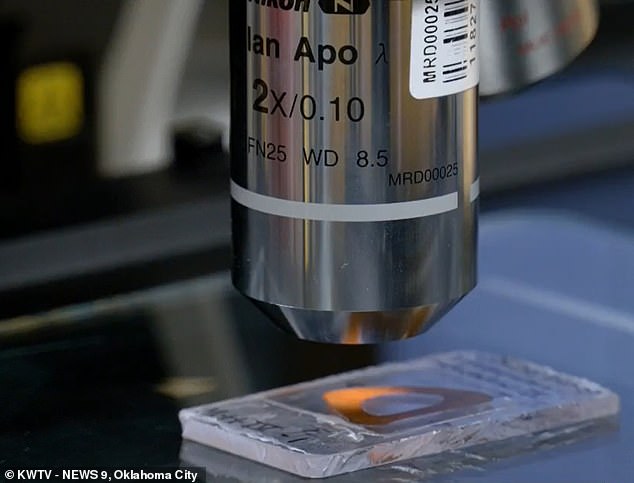
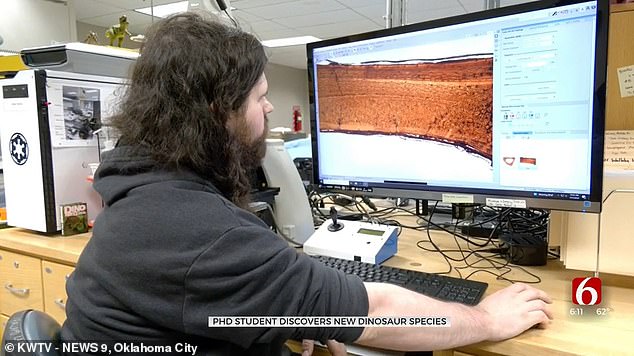
Atkins-Weltman told the Washington Post that the discovery caught him by surprise.
‘It took me at least maybe two or three days to really wrap my head around that because it was just so serendipitous,’ he said. ‘It started out not with a “eureka,” but with a “Hmm, that’s odd.”‘
Oklahoma State PhD candidate, Atkins-Weltman is studying anatomy and vertebrate paleontology. According to the school, he is the first of its students to ever be published in a peer-reviewed journal for the discovery of a new dinosaur.
‘My heart skipped a beat because I never expected something like this to fall into my lap,’ he confessed. ‘This is what I want to do with the rest of my life.’

